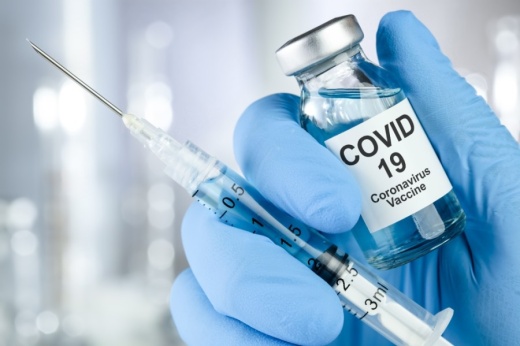As of late February, officials said they were hopeful vaccinations of the general public could begin as soon as early spring. However, challenges remain when it comes to getting vaccines to underserved and vulnerable populations, including people who lack information about the vaccine and do not trust it and people who lack access to transportation.
County officials said they are distributing the vaccines they are supplied as efficiently as possible, but public health advocates said it is important to improve public health outreach and to put systems in place to better reach those groups.
“I’m worried that we are just going to see a replay of that same movie that we’ve seen again and again,” said Dr. Mollyann Brodie, executive vice president and chief operating officer with the Kaiser Family Foundation, a nonprofit focused on health policy issues. “[A] new vaccine comes, and then, two to three years down the road, we look back, and we ask why the mortality rate is still higher in these populations. We [learn] nobody went to them in a concerted and sustained way.”
Successes and challenges
Those currently eligible for vaccines in Texas under the state plan include front-line health care workers, residents of long-term care facilities, people with certain medical conditions, individuals over age 50, teachers and child care workers.
As of March 19, a total of just over 1.3 million vaccine doses had been administered in Harris County. A total of 912,443 first doses had been given out, and 418,081 Harris County residents had been fully vaccinated, according to state data.
With vaccine supply still limited and largely concentrated in medical centers, some Katy residents have expressed frustration with distribution efforts.
“I’m on every list there is,” Katy resident Stephanie Caro said. “Daily searching—it’s a full-time job. [I am] part of a special [Facebook] group dedicated to the hunt. So far, not so good.”
Also of March 19, more than 25,000 vaccines have been distributed to various Katy-area providers, including local hospitals, clinics and pharmacies. The vast majority of vaccines in Harris County have been distributed to major hospitals in the Texas Medical Center.
Looking ahead
Local and national officials have stressed the importance of ensuring people are not overlooked in the vaccination process for reasons beyond those individuals' control, including cost, lack of transportation or lack of information.
Racial equity has also been at the forefront of those conversations, as communities of color have been hit especially hard by the coronavirus and have suffered a disproportionate number of the cases and deaths, said La Vonia Cannon, a former pharmacist who now serves as the regional director of Walgreens stores in the Greater Houston area. For that reason, Cannon said, it is even more crucial to ensure those communities are covered by vaccine efforts.
The city of Houston and the Texas Department of State Health Services have both contracted with Walgreens to help with vaccine distribution. Walgreens was selected in part because of its ability to reach underserved communities, Cannon said.
“Being in these communities of color that are socially underserved, we’re able to build those relationships, I think, a lot more strongly, and they’ll be more long-lasting,” she said. “With that relationship, we’ve seen [pharmacists] provide a lot more one-on-one education.”
The pharmacy chain launched a partnership Feb. 9 with the ride-hailing service Uber through which people who lack transportation can get free rides to vaccine appointments, Cannon said.
Another part of why reaching underserved communities is challenging has to do with education, Brodie said. People who do not understand how vaccines work or why they are important are less likely to seek out vaccines and more likely to be suspicious of them, she said.
If outreach to underserved communities is lacking, people who otherwise could have been swayed to get vaccinated could end up missing out, Brodie said.
“There’s a large share in the movable middle, and they very much want to see what happens to those who take the vaccine ahead of them,” Brodie said in a Feb. 18 virtual panel.
State and local officials have said they are doing what they can to ensure underserved communities are not overlooked. The state launched a mass vaccination site at NRG Stadium on Feb. 24 through a pilot program with the Federal Emergency Management Agency.
The purpose of the pilot, according to Texas Gov. Greg Abbott, is to “expand access to COVID-19 vaccinations in underserved communities.” However, because state data on where vaccines are being provided has been behind by as much as three weeks, Harris County Judge Lina Hidalgo said, the county does not have a real-time idea of where vaccines need to go.
“Unfortunately, we can’t have much of a solution besides what we’re doing right now unless we get better data and/or we get a lot more vaccines,” she said.





